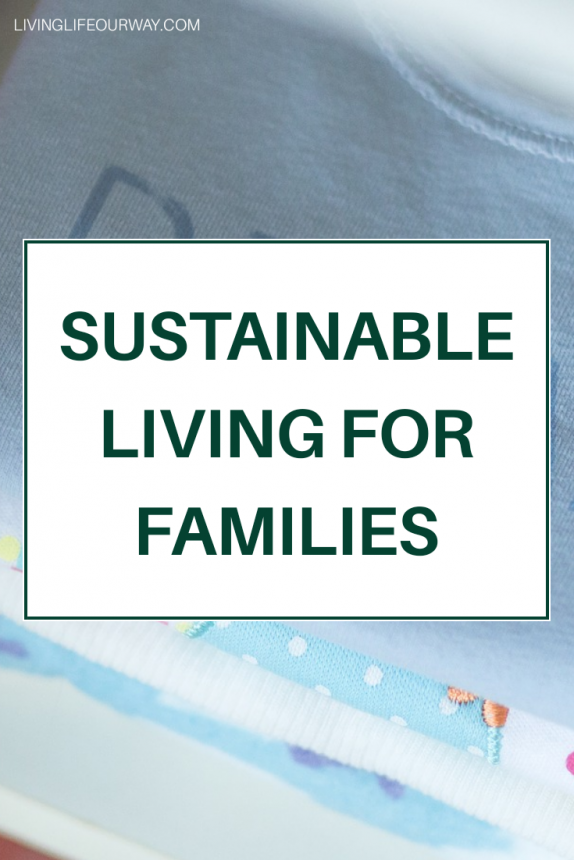If you’ve ever tried to adopt a more sustainable lifestyle, you’ll know how tricky it can be when as a society we’re used to, and encouraged to, constantly replace things on a whim. Everything comes in brand new packaging (usually plastic) and society trains us to always be on the lookout for the next trend, fashion, or must-have gadget. But more sustainable living is achievable! When you’re taking up the challenge to try and cut back on waste, a few simple ideas can help curb old habits…

Cutting Back on Packaging
Single use plastics are in the headlines. And understandably so. But in reality, single use anything isn’t a great idea. Options to avoid single use plastics where possible include always carrying your own canvas bag for shopping, buying fresh or loose foods where possible, and carrying your own travel mugs for drinks on the go. Also, look for foods in reusable glass bottles or jars.
Where it’s hard to avoid buying plastic packaging, try to reuse it. Use ice cream cartons or margarine tubs for leftover food storage. Margarine tubs also make great seedling trays if you’re growing your own veg from scratch.
Re-filling your own containers is a great way of cutting back on packaging too. Check if there’s somewhere in your area that allows you to buy loose items direct, for everything from milk, cereals, rice, shampoo or dried foods.
Alternatively, bulk buy pre-packaged items that you can then decant into smaller containers you already own. You could consider joining forces with friends and neighbours to buy in sufficient quantity to get a decent discount and cut down on excess packaging at the same time. Things like loo rolls, cleaning supplies and dry goods take up a lot of space, but can be safely kept in a self storage unit if there isn’t room in your home. They come in all sizes from a locker storage unit up, so don’t need to be expensive.
Slow Fashion
This growing movement contrasts with fast fashion, in which we constantly adopt the latest trends and regularly buy new items without considering how they’re produced, or where they go when we’re finished with them. Slow fashion overlaps with ethical fashion and sustainable fashion. At its heart, it’s about buying less, buying better-quality items that last longer, and maybe buying second hand or vintage.
Some clothing brands put slow fashion at the heart of their business ethics, but slow fashion principles are accessible to everyone, whether you can shop with these brands or not. By buying less and making what we buy last longer, we’re consuming less and reducing demand.
Children’s clothes are a good example. Good quality clothes are more often outgrown than worn out. Passing items onto younger siblings, other family members and friends with younger children or who are planning to have kids, or other members of the community, is a far greener alternative than buying new.
Ideas For Nearly New Kids Items
If you’re planning on trying for another baby soon, or any of your friends or family are expecting, why not save your first baby’s things to use again? Buying things for a baby is expensive; with pushchairs or buggies, cribs and cots, baby baths, sterilisers, changing mats and tables, as well as baby clothes and safety gates. Using things again makes for more sustainable living by helping cut down on waste. If there is a lack of space at home, lending out the items in the meantime is a consideration.
Alternatively, if there is no space to store, and temporary loans are not a possibility either, self storage rooms are an option for keeping all these necessities in good condition until they are needed again. Saving bedroom furniture in self storage during the nursery or early years stage is a more sustainable option than getting rid of it then buying again new. Of course, buying these things secondhand is also a good eco-friendly choice.
Toys too, are good examples. Kids quickly get bored with them, but you can rekindle interest after a few months if those toys have been tucked away out of the house; rotating toys in this way is useful for resolving both lack of space in the home and keeping up interest levels. This can give toys abit of extra life before they are passed on or sold to their next owner.
Storing or lending instead of spending may feel like a small step into sustainable living, but it’s another tool we can use to get more out of what we buy, cut down on landfill, and reduce waste. And remember; nearly new sales, clothes swap events, secondhand selling sites and reuse groups are all good ways of sourcing items and finding them new homes too.
I hope these tips help you along your journey to more sustainable living.
*This is a collaborative post


I have barely bought any new clothes in the last decade or so. Instead I mostly upcycle clothes discarded by my adult daughter and my son’s girlfriend, who are still at an age where they want new clothes.
Great post. It reminded me of a clothes swap party that I had with an old Weight Watchers Group about 15 years ago. I must do it again, it was great fun.
Sensible tips. Thank you. It is cultural expectations of new things that have, in part, contributed to the situation we are in. I am getting to the point now that I am disappointed if I can’t find what clothing we need second hand.
Always looking for ways to change our ” unhealthier ” ways – lots of useful tips thanks